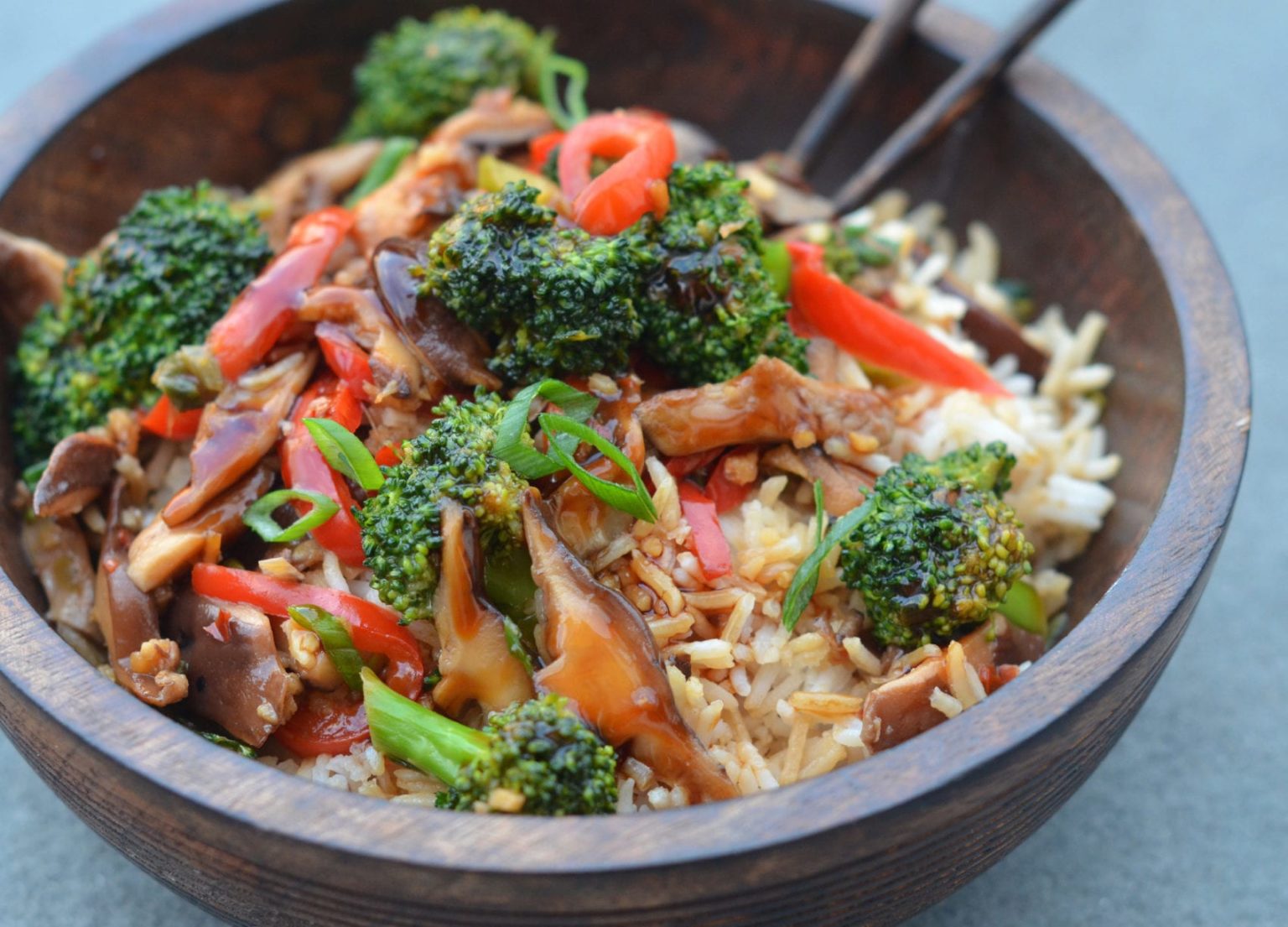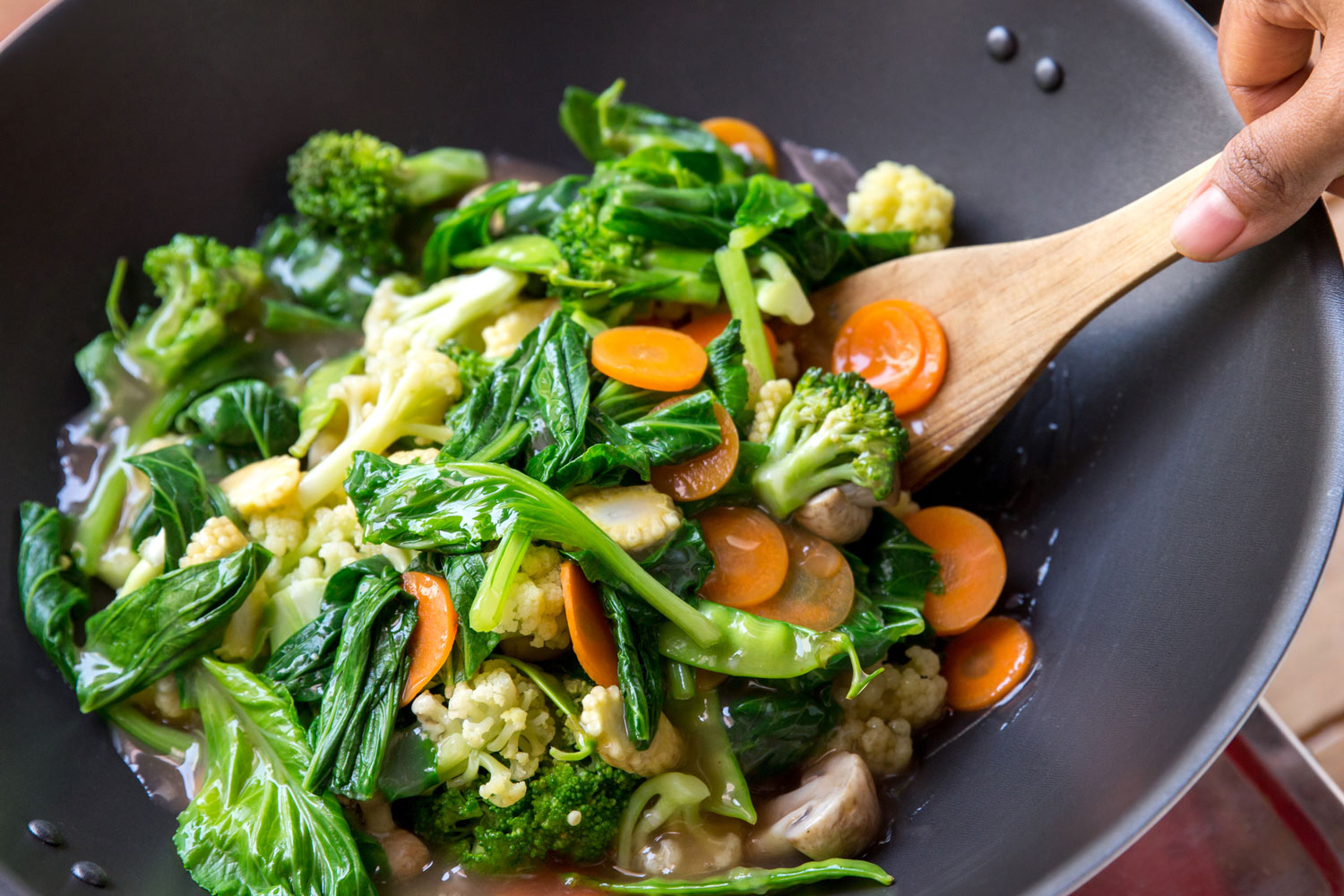Simple Chinese vegetarian recipes have gained immense popularity in recent times, offering a delectable and nutritious way to incorporate more plant-based meals into your diet. These recipes often feature a harmonious blend of fresh vegetables, aromatic herbs, and flavorful sauces, resulting in dishes that are not only delicious but also incredibly versatile and easy to prepare.
Embark on a culinary journey through the vibrant flavors of Chinese vegetarian cuisine. From stir-fried vegetables to savory noodle dishes, nourishing soups to delectable dumplings, this comprehensive guide will provide you with all the essential ingredients, cooking techniques, and popular recipes you need to create authentic and satisfying plant-based Chinese meals in the comfort of your own kitchen.
Introduction

Simple Chinese vegetarian recipes have gained immense popularity in recent years, as individuals increasingly embrace plant-based diets for both health and environmental reasons. Incorporating more vegetarian meals into one’s diet offers numerous benefits, including improved cardiovascular health, reduced risk of chronic diseases, and a positive impact on the environment.
Health Benefits
Research has consistently shown that plant-based diets rich in fruits, vegetables, whole grains, and legumes are associated with a lower risk of heart disease, stroke, type 2 diabetes, and certain types of cancer. Vegetarian diets are typically lower in saturated fat and cholesterol, while being high in fiber, antioxidants, and essential vitamins and minerals.
These nutrients help protect the body from chronic inflammation, oxidative stress, and other harmful processes that contribute to the development of chronic diseases.
Essential Ingredients
Simple Chinese vegetarian recipes rely on a few essential ingredients that provide a harmonious blend of flavors and textures. These ingredients form the backbone of many vegetarian dishes, adding depth and complexity to each bite.
Let’s explore the role and flavor profile of these key ingredients:
Soy Sauce
- A fermented sauce made from soybeans, wheat, and salt.
- Adds a savory, umami flavor to dishes.
- Can be used as a marinade, dipping sauce, or seasoning.
Sesame Oil
- An aromatic oil extracted from toasted sesame seeds.
- Provides a nutty, slightly smoky flavor.
- Often used as a finishing touch to enhance the aroma of dishes.
Garlic and Ginger
- Two aromatic ingredients that add depth and complexity to dishes.
- Garlic has a pungent, savory flavor, while ginger provides a warm, slightly spicy note.
- Often used together as a base for many vegetarian sauces and stir-fries.
Chinese Five-Spice Powder
- A blend of five spices: star anise, cloves, cinnamon, Sichuan peppercorns, and fennel seeds.
- Adds a warm, aromatic flavor to dishes.
- Can be used as a rub for tofu or vegetables, or added to sauces and marinades.
Shaoxing Wine
- A fermented rice wine commonly used in Chinese cooking.
- Adds a subtle sweetness and depth of flavor to dishes.
- Can be used for marinating, braising, or deglazing.
Basic Cooking Techniques
Mastering basic cooking techniques is essential for creating delicious and authentic Chinese vegetarian dishes. These techniques, such as stir-frying, steaming, and braising, allow you to bring out the flavors and textures of fresh vegetables while preserving their nutritional value.
In this section, we will explore these techniques in detail, providing step-by-step instructions and tips to help you achieve the best results.
Stir-Frying
Stir-frying is a popular Chinese cooking technique that involves cooking food quickly in a hot wok or skillet with a small amount of oil. This technique allows vegetables to retain their crispness and vibrant colors while infusing them with flavor.
- Choose the right wok or skillet: A well-seasoned wok or a large, flat-bottomed skillet is ideal for stir-frying.
- Heat the oil: Heat a tablespoon or two of vegetable oil over high heat until it shimmers.
- Add the vegetables: Add the vegetables to the hot oil and stir-fry constantly, using a spatula or wooden spoon to prevent them from sticking.
- Season to taste: Season the vegetables with salt, pepper, or other spices as desired.
- Cook until tender-crisp: Stir-fry the vegetables until they are tender-crisp, usually for 2-3 minutes.
Tips:
- Cut the vegetables into uniform pieces so they cook evenly.
- Don’t overcrowd the wok or skillet, as this will prevent the vegetables from cooking properly.
- Stir-fry the vegetables in batches if necessary to avoid overcrowding.
- Use a high heat setting to quickly cook the vegetables and prevent them from becoming soggy.
Popular Recipes
Chinese vegetarian cuisine offers a diverse range of delectable and easy-to-follow recipes that cater to a wide range of tastes and preferences. From vibrant stir-fried vegetables to comforting noodle dishes, hearty soups to delectable dumplings, there is something for every palate.
Let’s explore some popular and accessible Chinese vegetarian recipes that will inspire your culinary adventures.
Stir-fried vegetables are a cornerstone of Chinese vegetarian cooking, offering a quick and healthy way to enjoy the bounty of fresh produce. Whether it’s broccoli florets tossed in a savory garlic sauce or crisp bell peppers and onions stir-fried with a tangy ginger-soy marinade, these dishes are a colorful and nutritious addition to any meal.
Stir-fried Green Beans
- Fresh green beans, trimmed and cut into bite-sized pieces
- Garlic cloves, minced
- Ginger, minced
- Soy sauce
- Sesame oil
- Pinch of sugar
In a large skillet or wok over medium-high heat, add a drizzle of sesame oil. Once the oil is hot, add the green beans and cook for 3-4 minutes, or until they start to soften but still retain their vibrant color.
Add the garlic and ginger and cook for an additional minute, until fragrant. Pour in the soy sauce and a pinch of sugar, and stir to coat the green beans evenly. Cook for another minute or two, or until the sauce has thickened slightly and the green beans are tender-crisp.
Nutritional Value
Simple Chinese vegetarian recipes are not only delicious but also packed with essential nutrients. These dishes are a great source of vitamins, minerals, and antioxidants, which are vital for maintaining good health.Vitamins found in these recipes include vitamin A, which is important for vision, skin health, and immune function; vitamin C, which is essential for collagen production and immune function; and vitamin K, which is necessary for blood clotting and bone health.
Minerals found in these recipes include calcium, which is essential for strong bones and teeth; iron, which is necessary for red blood cell production; and potassium, which is important for regulating blood pressure and fluid balance.Antioxidants found in these recipes include flavonoids, which have been shown to reduce the risk of chronic diseases such as heart disease and cancer; and carotenoids, which have been shown to protect against macular degeneration and other eye diseases.
Benefits of Consuming Simple Chinese Vegetarian Recipes
Consuming simple Chinese vegetarian recipes can provide numerous health benefits, including:
- Improved heart health
- Reduced risk of chronic diseases
- Improved digestion
- Boosted immunity
- Weight management
Meal Planning
Incorporating simple Chinese vegetarian recipes into your weekly meal plans can help you enjoy a variety of nutritious and flavorful meals. By planning ahead, you can ensure that you have healthy and satisfying options available throughout the week.
To create a balanced and healthy meal plan, consider the following tips:
Variety and Balance
Variety is key when it comes to meal planning. Eating a wide range of foods ensures that you are getting all the nutrients your body needs. When planning your meals, aim to include a variety of fruits, vegetables, whole grains, and lean protein sources.
This will help you create meals that are both nutritious and satisfying.
Recipe Customization

The beauty of simple Chinese vegetarian recipes lies in their versatility. Whether you’re catering to dietary restrictions or simply want to tailor the dish to your taste, there are endless ways to customize these recipes.
Substitutions and modifications can be made without compromising flavor. For instance, if you’re allergic to soy, you can swap out soy sauce for tamari or coconut aminos. If you’re looking for a gluten-free option, use rice noodles or quinoa instead of wheat noodles.
Flavor Adjustments
Adjusting flavors is another way to customize your recipes. If you prefer a spicier dish, add a touch of chili oil or Sriracha. For a sweeter taste, incorporate honey or maple syrup. And if you’re craving a tangy kick, squeeze in some lemon or lime juice.
Vegetable Variations
The vegetables you use can also be customized. If you don’t have broccoli on hand, try using cauliflower or snap peas. If you’re not a fan of carrots, substitute them with bell peppers or zucchini. The possibilities are endless!
Outcome Summary
Incorporating simple Chinese vegetarian recipes into your weekly meal plans is not only a delicious endeavor but also a rewarding one for your health and well-being. With their nutritional richness, ease of customization, and endless possibilities for flavor exploration, these recipes empower you to create healthy, satisfying, and unforgettable plant-based meals that will delight your taste buds and nourish your body.
Helpful Answers
What are the key ingredients used in simple Chinese vegetarian recipes?
Common ingredients include soy sauce, sesame oil, garlic, ginger, green onions, tofu, mushrooms, and a variety of fresh vegetables.
What are some essential cooking techniques for simple Chinese vegetarian recipes?
Stir-frying, steaming, and braising are fundamental techniques used to create flavorful and tender dishes.
Can I customize simple Chinese vegetarian recipes to suit my dietary needs?
Yes, you can easily substitute ingredients or make modifications to accommodate dietary restrictions, such as gluten-free or vegan.
